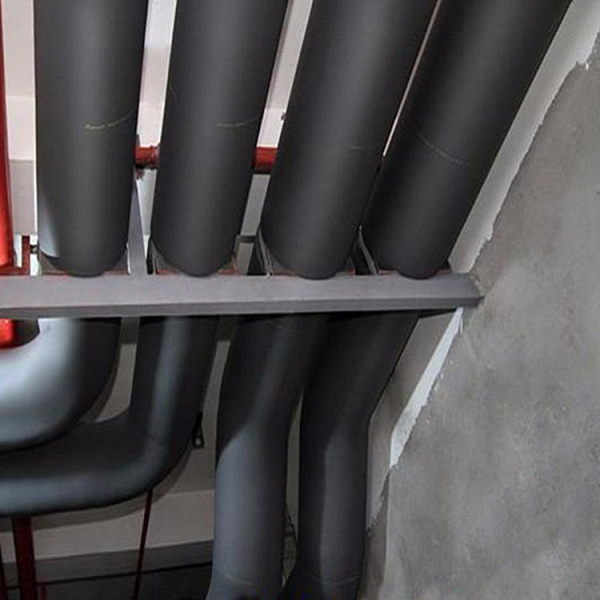

SEARCH
In the modern construction industry, the thermal insulation and cold preservation of buildings has attracted people's attention, especially the use of new materials. Commonly used insulation materials include foamed cement, phenolic foam, aluminum silicate, glass wool felt, rock wool insulation felt, rubber and plastic, etc. Among them, rubber and plastics are widely used in central air-conditioning, construction, chemical industry, medicine, textile, metallurgy, ships, vehicles, electrical appliances and other fields due to their low thermal conductivity and good thermal insulation effect.
Rubber and plastic materials are elastic and soft, and have excellent properties such as bending resistance, cold resistance, heat resistance, flame retardant, waterproof, low thermal conductivity, shock absorption and sound absorption. The closed-bubble internal structure ensures that the material is completely isolated from water vapor. Moisture in the outside air is difficult to penetrate into the material, it does not absorb water and does not condense, and it has excellent resistance to water vapor permeability. Uetersen Rubber & Plastic has been tested by SGS, and the measured value is far lower than the EU standard value of non-toxic substances, which is healthy and safe to use. The appearance is beautiful, the construction is convenient and fast, and no other auxiliary materials are required.

Rubber and plastic have excellent fire resistance. According to the national standard "Classification Method of Combustion Performance of Building Materials", rubber and plastics are judged to be B1-level flame-retardant materials after testing, and they are suitable for a wide temperature range, from -40 °C to 105 °C, and rubber and plastic materials can withstand low temperatures of minus 40 degrees Celsius. There is no need to add a vapor barrier to the surface of the rubber-plastic cold insulation layer. The moisture resistance factor μ of rubber and plastic is greater than 3500, forming a built-in waterproof vapor layer, even if the product is scratched, it will not affect the overall moisture resistance performance. Therefore, rubber and plastic are both thermal insulation layers and moisture-proof layers.
In addition, when using rubber and plastic to insulate buildings, the thermal insulation materials used are few and thin, which saves both space and cost. In addition, the thickness of rubber and plastic is much smaller than other insulation materials. It is with the above advantages that rubber and plastic insulation materials have become the choice of many builders.